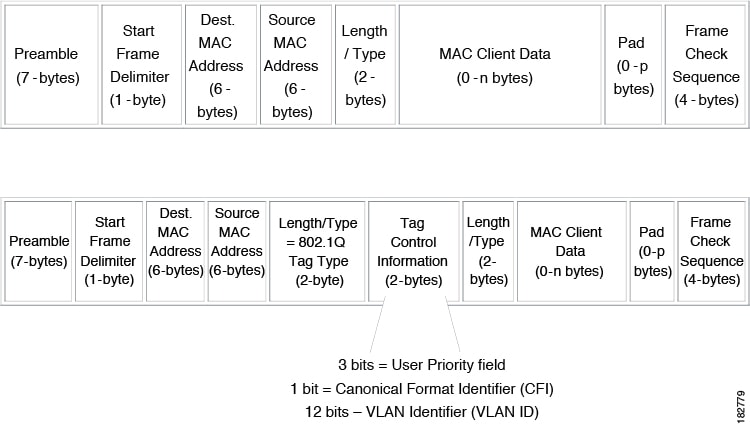Understanding Access and Trunk Interfaces
Ethernet interfaces can be configured either as access ports or a trunk ports, as follows:
-
An access port can have only one VLAN configured on the interface; it can carry traffic for only one VLAN.
-
A trunk port can have two or more VLANs configured on the interface; it can carry traffic for several VLANs simultaneously.
 Note |
Cisco NX-OS supports only IEEE 802.1Q-type VLAN trunk encapsulation. |
The following figure shows how you can use trunk ports in the network. The trunk port carries traffic for two or more VLANs.

In order to correctly deliver the traffic on a trunk port with several VLANs, the device uses the IEEE 802.1Q encapsulation or tagging method.
To optimize the performance on access ports, you can configure the port as a host port. Once the port is configured as a host port, it is automatically set as an access port, and channel grouping is disabled. Use the host designation to decrease the time it takes the designated port to begin to forward packets.
 Note |
Only an end station can be set as a host port; you will receive an error message if you attempt to configure other ports as hosts. |
If an access port receives a packet with an 802.1Q tag in the header other than the access VLAN value, that port drops the packet without learning its MAC source address.
 Note |
An Ethernet interface can function as either an access port or a trunk port; it cannot function as both port types simultaneously. |

 Feedback
Feedback